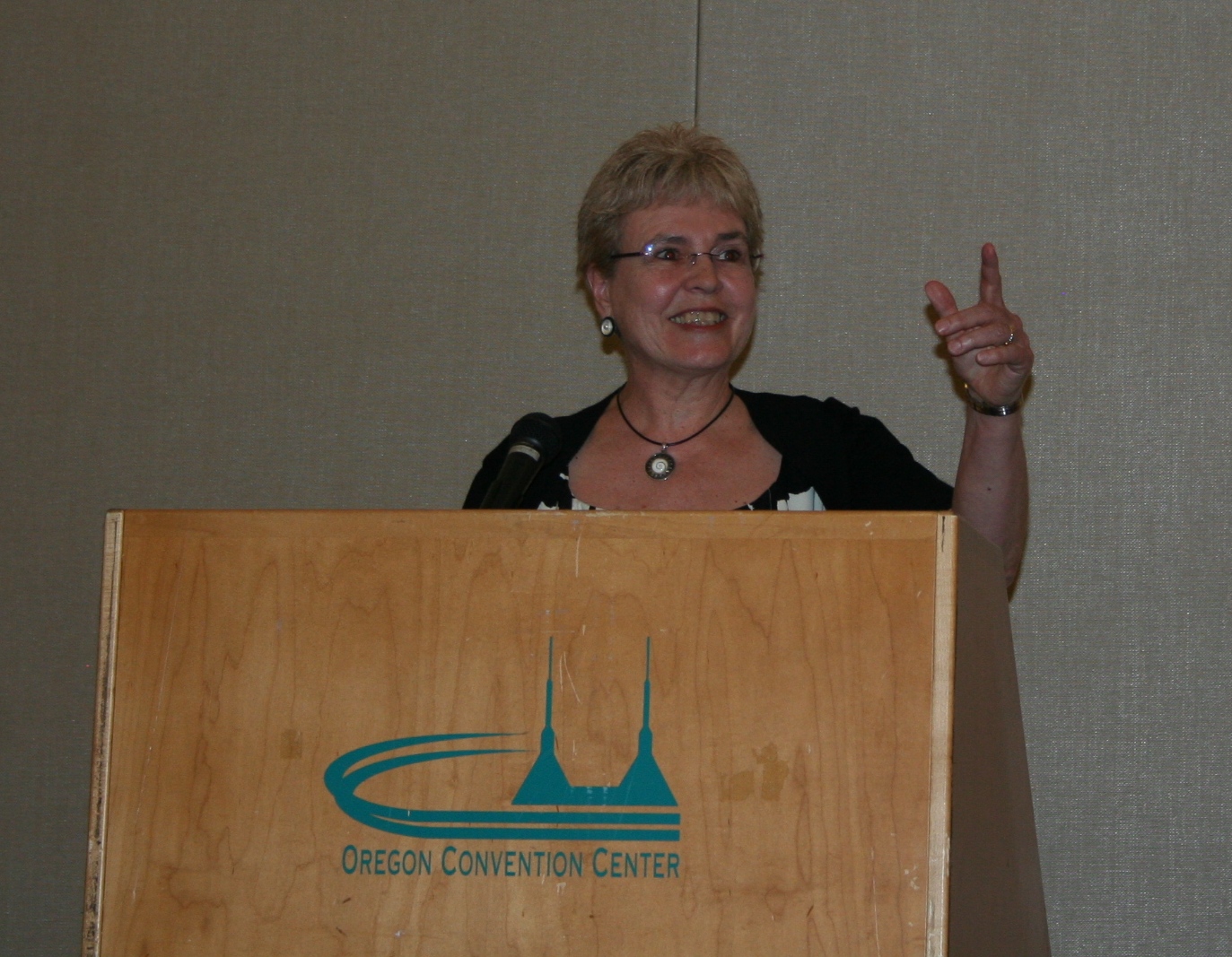Lubchenco: “This is the time of ecology”
 By Terence Houston, ESA science policy analyst
By Terence Houston, ESA science policy analyst
During the opening plenary of ESA’s 97th Annual Meeting, attendees witnessed firsthand the power individuals working together have to make things happen in their communities.
The plenary kicked off with the presentation of the Society’s 2012 Regional Policy Award to Ken Bierly of the Oregon Watershed Enhancement Board who was “greatly honored” and “deeply appreciative” of the award. Bierly thanked a host of individuals he had worked with who played a pivotal role in “helping us to manage our environment in a meaningful way.” His work on freshwater resources in the state of Oregon has helped to restore marshes and streams as well as protect water quality in rivers and streams, which help sustain fish and wildlife habitat and preserve natural resources that human communities depend on.
The keynote address was given by Jane Lubchenco, Administrator for the National Oceanic Atmospheric Administration (NOAA). Lubchenco asserted that “this is the time of ecology.” Referring to scientists who are engaged in policy, Lubchenco likened the process to a relay race where scientists ‘pass the baton’ to one another, noting that this is necessary to sustain engagement and community networking over time. Lubchenco dedicated her presentation to Elinor Ostrom who once stated “the goal now must be to build sustainability into the DNA of our globally interconnected society. Time is the natural resource in shortest supply.” Although Ostrom was an economist, Lubchenco cited her as “an ecologist by thinking,” and discussed how her research highlighted how ordinary people working collectively could be successful in driving positive change in their communities.
In her speech, Lubchenco outlined NOAA’s many initiatives, including a National Ocean Policy that streamlines the responsibilities of several dozen federal bureaus, restoration of the Gulf of Mexico, fisheries management that is influenced by science, and a climate adaption strategy to help mitigate impacts of climate change. She further noted that, during her tenure, the agency has reformed the National Climate Assessment to increase public input. There is also legislation underway to reestablish a Chief Scientist at NOAA, who could be appointed without Senate confirmation, a condition that has left the position vacant for the past 16 years.
Noting that NOAA is the nation’s oldest scientific agency in the federal government, Lubchenco touted NOAA’s position as being at the forefront of agencies that use science to inform policy. Lubchenco mentioned that the agency has begun work on its own scientific integrity policy before the president issued his call for all federal agencies to promote scientific integrity throughout the executive branch. She also touted the importance of “use-inspired research” that has tangible and direct benefits to communities and asserted that environmental agencies that focus on such research should be prioritized in funding to the extent that agencies with a broader science mission are, such as the National Science Foundation and the National Institutes of Health.
Lubchenco urged scientists to engage beyond their own community, including business leaders and policymakers. She even urged attendees to consider becoming policymakers themselves by running for elected office or accepting a position in policy when asked, citing her own experience as a scientist influencing policy as highly rewarding. The NOAA administrator pointed out that one need not start at the top to make a big impact. In fact, she asserted, smaller scale actions often serve as models and motivators for larger actions.
Ergo, a city ordinance or state legislation that uses science to inform policy and/or promotes environmental stewardship could serve as a template for a broader national reform several years later. Lubchenco pointed to the Oregon Watershed Enhancement Board and Ken Bierly and his many colleagues as a wonderful example of how much can be accomplished at the state and community levels.